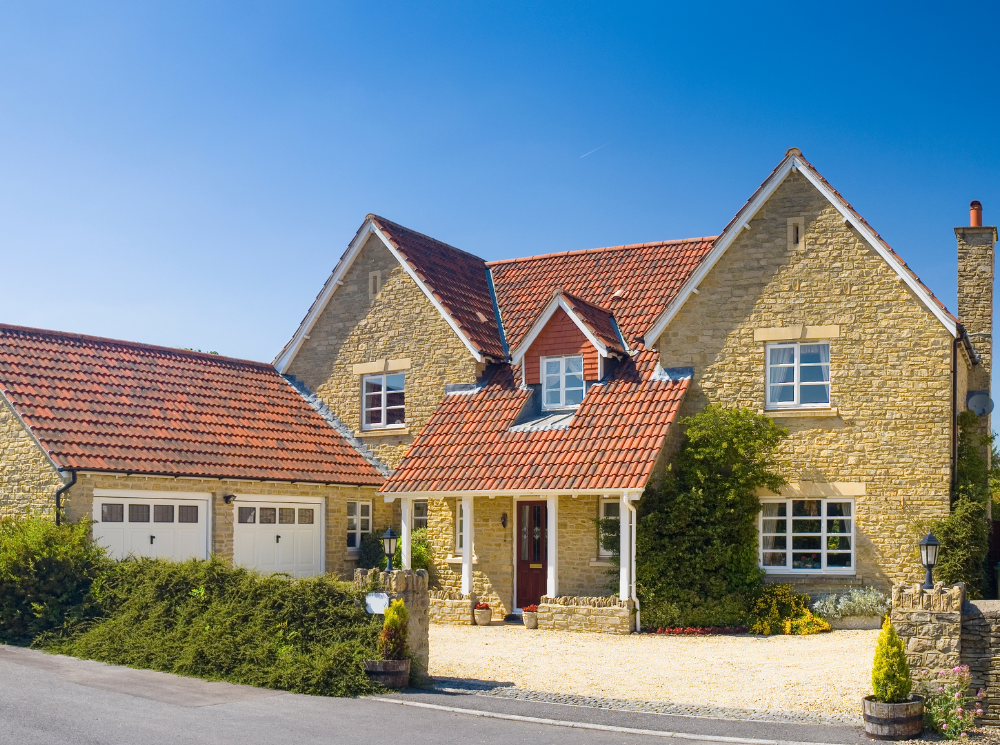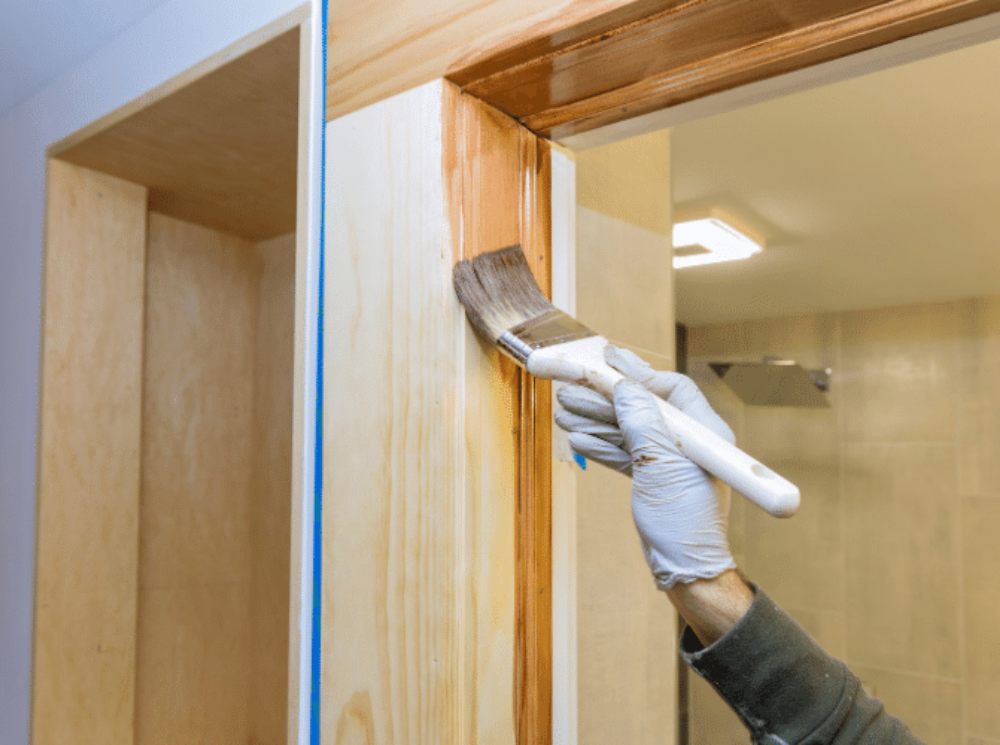Have you ever wondered if the windows in your home could do more than just let in light? What are casement windows, and could they be the key to enhancing your home’s aesthetics, ventilation, and security?
Imagine a window that brightens your room, easily brings in fresh air, and provides an unobstructed view of the outdoors. This is the reality for many homeowners across the UK who have chosen casement windows for their homes.
What are Casement Windows?
Casement windows are popular for homeowners due to their unique design and functionality. Defined by their casement window definition, these are windows attached to their frame by one or more hinges at the side.
They can be used singly or in pairs within a common frame, where they are hinged on the outside. Casement windows offer the flexibility to open outward to the left, right, or inward, allowing maximum ventilation and natural light.
History and Evolution of Casement Windows in the UK
The story of casement windows in the UK is quite fascinating. These windows have been around since the medieval times. Back then, they were simple openings with wooden shutters or animal hides. When glass became common in the 16th century, casement windows looked more like what we see today.
These windows have seen a lot of changes over the years. In the Tudor period, for example, glass panes were held together with lead. The design of casement windows has always adapted to meet the needs and styles of the times. This adaptability makes casement window UK a topic worth exploring for anyone interested in the blend of history and practicality in their home.
Casement windows are known for their charm and functionality. They hinge at the side and can swing open, either inward or outward. This design is not just about looks; it’s also about letting in fresh air and making homes more comfortable. Single casement window designs are especially popular because they fit well with many types of homes, from historic to modern.
Benefits of Casement Windows
Casement windows are a prime choice for UK homes, blending functionality with aesthetic appeal. Here’s a closer look at their benefits:
Excellent Ventilation
Unlike sliding or double-hung windows, these windows swing open fully, allowing you to enjoy a breeze from any direction. This feature is perfect for ventilating a room quickly and efficiently.
Energy Efficiency
Casement windows boast an airtight seal when closed. This design minimises air leakage, keeping your home warmer in the winter and cooler in the summer, leading to lower energy costs.
Easy to Open and Close
Their crank mechanism makes casement windows incredibly user-friendly. This makes them ideal for hard-to-reach places, like over the kitchen sink or in a bathroom.
Great Views
With less frame obstruction, casement windows offer a wide, unobstructed view of the outdoors. This makes them perfect for enjoying your garden or the scenery beyond your property.
Versatile Designs
Whether your home is modern or traditional, there’s a casement window style to match. They come in various materials and finishes, complementing any home’s design.
Enhanced Security
The locking mechanism on casement windows is embedded into the frame, making them difficult to break into from the outside. This provides an added layer of security for your home.
Durable
Casement windows are robust, long-lasting, and designed to withstand unpredictable UK weather. Their quality construction means they can resist heavy winds and rain without warping or leaking.
Low Maintenance
The simplicity of their design makes casement windows easy to clean and maintain. Many models allow you to clean the exterior from the inside, making upkeep a breeze.
Sound Reduction
The tight seal of casement windows also helps in noise reduction, making them ideal for homes in busy areas or near main roads. Enjoy a quieter, more peaceful home environment.
Natural Light
Maximising daylight in your home is easy with this kind of material. Their design allows maximum light exposure, brightening any room and making spaces appear larger and more welcoming.
Different Types of Casement Windows
Casement windows are versatile and can be tailored to fit any home’s aesthetic and functional needs. We’ve outlined the most common types below to help you understand the variety available and make an informed decision. For a more comprehensive look at each type, visit our detailed guide on Types of Casement Windows.
| Type of Casement Window | Description | Ideal Use |
| Classic Single Frame | Features a single glass pane, offering simplicity and elegance. | Provides excellent ventilation and natural light in any room. |
| Double Frame | Consists of two casements that open from a central mullion, offering a symmetrical design. | Suitable for larger openings, offering increased airflow. |
| French Casement | Has two sashes that open without a central pillar, providing an unobstructed view. | It adds a touch of style, perfect for enjoying views and wide openings. |
| Side Hung | Hinged on one side and opens horizontally, offering design flexibility. | The most common type, versatile for various rooms. |
| Top Hung (Awning) | Hinged at the top, opens outward from the bottom, allowing ventilation while blocking rain. | Great for kitchens and bathrooms, where ventilation is needed without letting in rain. |
| Bottom Hung (Hopper) | Hinged at the bottom, opens inward from the top. | Often used in basements or bathrooms for privacy and ventilation. |
| Flush Casement | Sits flush within the frame when closed, offering a sleek look. | It is ideal for a minimalist design, providing clean lines. |
| Fixed Casement | Mimics the appearance of casement windows but does not open. | Used where no ventilation is needed but the aesthetic of casement windows is desired. |
Choosing the Right Casement Window for Your Home
Picking the right casement window for your home is key. Think about the style of your house. Do you want a traditional look or something more modern? Consider how much ventilation you need. Also, think about maintenance.
Questions to Consider if Right Casement Window
Choosing the right casement window involves balancing style, functionality, and budget. By asking these questions, you’re on your way to finding the perfect fit for your home.
| Question | Why It’s Important | Consideration |
| 1. Does the window style match my home? | Ensures aesthetic harmony. | Style |
| 2. How much ventilation do I need? | Affects air quality and comfort. | Functionality |
| 3. What material should I choose? | Impacts durability and maintenance. | Material |
| 4. Do I need energy-efficient windows? | It can reduce heating bills. | Efficiency |
| 5. How important is security? | Keeps your home safe. | Security |
| 6. Will these windows provide enough natural light? | Brighten rooms affect mood. | Light |
| 7. Are there any local planning restrictions? | Ensures compliance with local laws. | Legal |
| 8. How easy are the windows to clean? | Affects upkeep and view. | Maintenance |
| 9. What is my budget? | Determines options available. | Cost |
| 10. Who will install the windows? | Ensures proper installation. | Installation |
Things to Consider Before Installing Casement Window
When thinking about adding casement windows to your home, keep these points in mind:
- Location: Consider where the window will go. Casement windows need space to open outward or inward.
- Wind Direction: Since they open outward, consider the wind direction to ensure they don’t catch too much wind.
- View and Light: Consider how the window affects your room’s view and natural light.
- Size: The size of the window impacts its look and function. Bigger windows offer more light but consider the space.
- Material: Casement windows come in wood, uPVC, and aluminium. Each has its benefits and style.
- Colour and Finish: Choose a colour and finish that matches your home’s style.
- Energy Efficiency: Look for windows with good energy ratings to save on heating costs.
- Security Features: Check for windows with strong locks and security features.
- Planning Permissions: You might need permission to change your windows in some areas.
- Budget: Have a clear budget. Remember, quality and additional features like double glazing affect the price.
Professional Installation and Maintenance Tips
Installing and maintaining casement windows properly is crucial for their longevity and performance. Here’s a step-by-step guide to ensure your windows function at their best:
- Choose the Right Professional: Start by selecting a skilled installer. Look for someone with experience in fitting casement windows specifically. This ensures your windows are installed correctly from the get-go.
- Measure Accurately: Before anything is ordered, precise measurements are essential. Incorrect sizing can lead to problems down the line. Your installer should double-check measurements to avoid any issues.
- Check for Quality: Not all casement windows are created equal. Opt for high-quality materials, whether choosing a single casement window or multiple units. Quality windows resist wear and tear better.
- Ensure Proper Sealing: During installation, ensuring an airtight seal is crucial for energy efficiency. This step prevents drafts and keeps your home comfortable all year round.
- Regular Cleaning: Keep your casement windows looking great by cleaning them regularly. Use a mild detergent and a soft cloth to clean the glass and frame. This prevents dirt buildup and maintains clarity.
- Lubricate the Hinges: To keep the windows opening smoothly, lubricate the hinges annually. A silicone-based lubricant works best, avoiding any sticky residue.
- Inspect the Seals: Check the weather stripping and seals periodically for wear and tear. Replacing these as needed helps maintain your window’s energy efficiency.
- Check for Damage: Inspect your windows regularly for any signs of damage, such as cracks in the glass or rot in the frame. Early detection means easier repairs.
- Use Proper Tools: When maintaining your windows, use tools and products designed for casement windows. This avoids any accidental damage.
- Consult Your Installer: If you encounter any issues, don’t hesitate to contact your installer. They can provide expert advice and service to keep your windows in top condition.
Following these steps ensures your casement windows are installed correctly and maintained properly for years. Remember, taking care of your windows enhances their performance, appearance, and lifespan, making them a valuable addition to your home.
Why Casement Windows Are a Smart Choice for UK Homes
To summarise, this kind of material is an excellent choice for UK homes, blending versatility, efficiency, and aesthetic appeal. Their design promotes superb ventilation and natural light, enhancing any space. Thanks to their tight seal, these windows are also energy-efficient, helping to lower heating costs.
They are user-friendly and suitable for everyone, and their variety of styles fits any home décor, from traditional to modern. They offer enhanced security, withstand the UK’s weather, and are easy to maintain, adding to their appeal.
For more details, contact Patchett Joinery. Our experts are ready to help. We offer personalised advice for your home. Make the perfect choice with us.
FAQs
What Is a Casement Window?
A casement window is a window attached to its frame by one or more hinges at the side. They can open outward to the left, right, or inward, providing excellent ventilation and natural light.
Why Do People Use Casement Windows?
People use casement windows for superior ventilation, energy efficiency, and unobstructed views. Their design allows for full window opening, maximising airflow and light entry into the home.
Why Are Casement Windows Used?
Casement windows are used for their ability to enhance home security, provide better insulation, and offer versatile design options. Their tight seal, when closed, makes them energy efficient, and their locking mechanism adds an extra layer of security.
What Is the Difference Between a Casement Window and a Regular Window?
The main difference is in the operation and design. Casement windows hinge at the side and open outward or inward with a crank, offering full top-to-bottom ventilation. Regular windows, like double-hung windows, slide up and down and provide limited ventilation.
How Do I Maintain a Casement Window To Ensure Its Longevity?
To maintain a casement window, regularly clean the frame and glass with mild soap and water, lubricate the hinges and locks annually, and inspect the seal and weather stripping to ensure they’re intact and effective.





